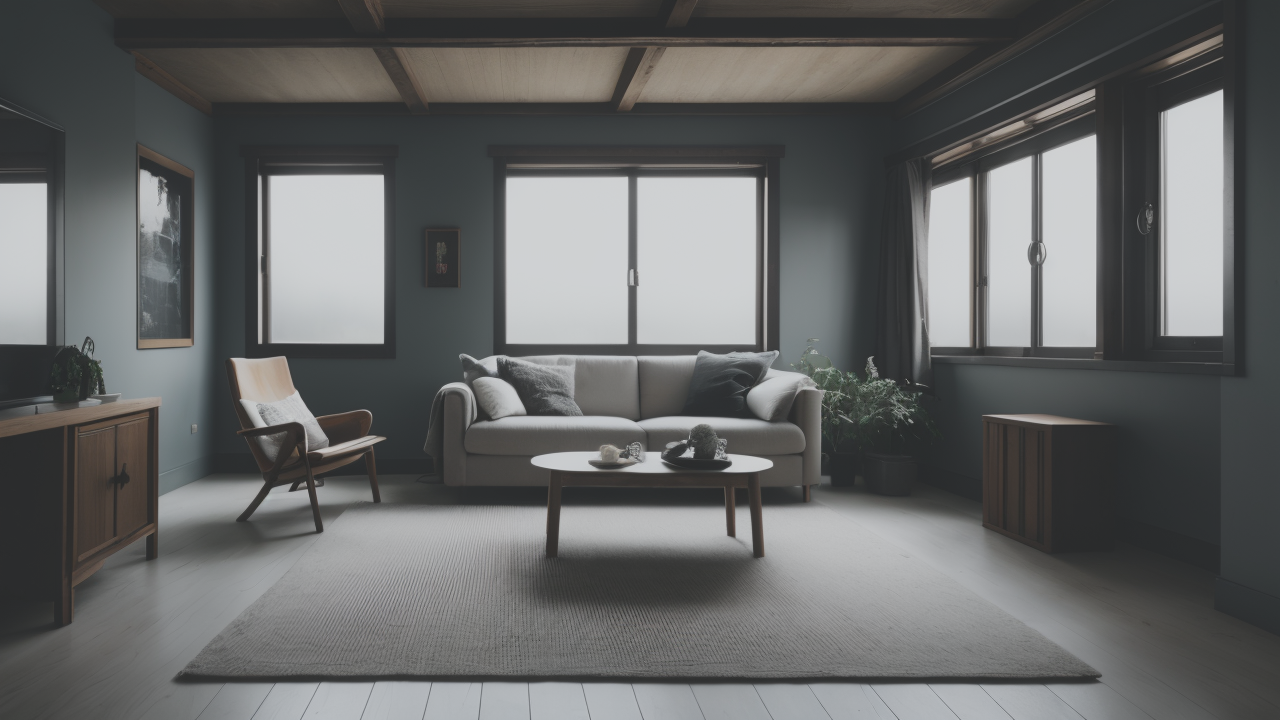
The Beauty of Flaws: Incorporating Wabi Sabi Principles in Colorful Artpieces
The Origins of Wabi-Sabi: A Cultural Overview
The Roots of Wabi-Sabi in Japan
Wabi-sabi is a Japanese concept with deep roots in Zen Buddhism. It emerged in the 15th century during tea ceremonies. The term combines two ideas: 'wabi' (simplicity) and 'sabi' (the beauty of age).

Key aspects of wabi-sabi include:
- Appreciation of natural imperfections
- Acceptance of transience
- Finding beauty in simplicity
In Japan, wabi-sabi influenced various art forms. It shaped pottery, painting, and architecture. Artists embraced asymmetry and rough textures. They valued items that showed signs of age and use.
This aesthetic celebrates the marks of time on objects. A cracked tea bowl or a weathered wooden beam is seen as beautiful. These imperfections tell a story and add character to spaces.
Wabi-sabi is more than just a visual style. It's a way of seeing the world. It teaches us to find beauty in humble, everyday things. This view contrasts with Western ideals of perfection and newness.
Wabi-Sabi as a Philosophy in Art and Life
Wabi-sabi extends beyond aesthetics into a life philosophy. It shapes how we perceive beauty and value. In art, wabi-sabi embraces:
- Subtle colors
- Natural materials
- Minimalist forms
These elements create a sense of calm and connection to nature. They remind us of the passing of time and the cycle of life. In daily life, wabi-sabi encourages:
- Mindfulness
- Contentment with what we have
- Appreciation of natural processes
This mindset can lead to less stress and more joy in simple pleasures. It teaches us to value what we have, not chase perfection. Wabi-sabi in art reflects these life lessons.
Artists might use natural materials like clay or wood. They often leave tool marks visible. Shapes may be irregular or asymmetrical. Colors are usually muted and earthy. These choices create pieces that feel authentic and alive.
Wabi-Sabi in Modern American Home Decor
Embracing the Charm of Imperfection
Wabi-sabi is gaining popularity in American homes. It offers a fresh alternative to mass-produced decor. Many people are drawn to its warmth and authenticity.

In wabi-sabi interiors, you might see:
- Handmade ceramics with visible brush strokes
- Wooden furniture with knots and grain patterns
- Linen textiles with natural wrinkles
These elements add depth and character to a space. They create a lived-in feel that's both cozy and elegant. Each item tells its own story through its imperfections.
A chipped vase becomes a unique work of art. A wrinkled bedspread adds texture and interest. These 'flaws' make a home feel more personal and inviting. They remind us that beauty exists in imperfection.
Wabi-sabi decor often includes items that show their age. An antique wooden table with a patina of use. A stone sculpture weathered by time. These pieces bring a sense of history and continuity to modern spaces.
Incorporating Wabi-Sabi into Various Home Styles
Wabi-sabi can blend with many decor styles. It's not about creating a fully Japanese look. Instead, it's about adding elements that bring warmth and authenticity to any space.
In a modern home, wabi-sabi might mean:
- A rough-hewn wooden bench in a sleek entryway
- Handmade ceramic vases on a glass coffee table
- A painting with subtle, earthy tones in a white-walled room
For traditional interiors, wabi-sabi can soften formal spaces:
- An antique mirror with a slightly tarnished frame
- Wildflowers in a simple, handmade vase
- A weathered leather armchair in a polished study
In eclectic settings, wabi-sabi principles can create harmony:
- Mixing items of different ages and styles with a common earth-tone palette
- Using natural materials like stone or clay throughout the space
- Balancing rough and smooth textures for visual interest
The key is to find balance. Wabi-sabi elements should feel intentional, not messy. They add depth and character without overwhelming the space. The goal is to create a calm, grounded atmosphere.
Benefits of Wabi-Sabi Art for Homeowners
Enhancing the Value of Homes with Wabi-Sabi Features
Wabi-sabi art and design can increase a home's appeal and value. These unique elements stand out in the real estate market. They offer a distinctive look that many buyers find attractive.

Homes with wabi-sabi features often feel:
- More authentic and personal
- Timeless rather than trendy
- Warm and inviting
These qualities can make a property more memorable to potential buyers. Wabi-sabi elements add character that mass-produced decor can't match. This uniqueness can justify higher prices in some markets.
Wabi-sabi also aligns with growing interest in sustainability. Many wabi-sabi pieces are:
- Made from natural, eco-friendly materials
- Designed to last and age beautifully
- Easy to repair or repurpose
This eco-conscious aspect appeals to environmentally aware buyers. It can position a home as both stylish and responsible. Wabi-sabi interiors often feel carefully curated and thoughtful.
Psychological and Aesthetic Advantages of Wabi-Sabi Design
Wabi-sabi design offers more than visual appeal. It can positively impact our mental wellbeing and how we experience our homes. The philosophy promotes:
- Mindfulness and presence
- Acceptance of imperfection
- Appreciation for simplicity
These principles can create a calming home environment. Wabi-sabi spaces often feel less cluttered and more peaceful. They encourage us to slow down and notice small details.
Aesthetically, wabi-sabi brings a sense of:
- Balance and harmony
- Connection to nature
- Authenticity and depth
These qualities can make a space feel more grounding and comforting. Wabi-sabi interiors often have a timeless quality. They don't follow fast-changing trends, reducing the urge to constantly update decor.
The focus on natural materials and textures can also improve sensory experiences. Touching rough stone or smooth wood can be soothing. Natural fibers and earth tones can create a cozy, nest-like feel.
By embracing wabi-sabi, homeowners can create spaces that are both beautiful and nurturing. This approach to design supports overall wellbeing, making our homes true sanctuaries. It encourages a slower, more mindful way of living and appreciating our surroundings.


